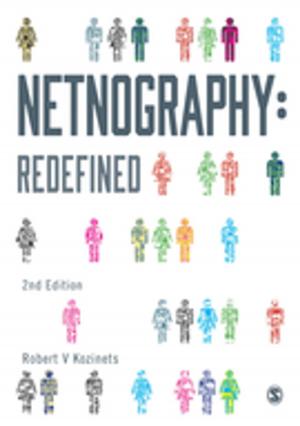Designing Experiments for the Social Sciences
How to Plan, Create, and Execute Research Using Experiments
Nonfiction, Reference & Language, Reference, Research, Social & Cultural Studies, Social Science| Author: | Renita Coleman | ISBN: | 9781506377308 |
| Publisher: | SAGE Publications | Publication: | August 27, 2018 |
| Imprint: | SAGE Publications, Inc | Language: | English |
| Author: | Renita Coleman |
| ISBN: | 9781506377308 |
| Publisher: | SAGE Publications |
| Publication: | August 27, 2018 |
| Imprint: | SAGE Publications, Inc |
| Language: | English |
Designing Experiments for the Social Sciences: How to Plan, Create, and Execute Research Using Experiments is a practical, applied text for courses in experimental design. The text assumes that students have just a basic knowledge of the scientific method, and no statistics background is required. With its focus on how to effectively design experiments, rather than how to analyze them, the book concentrates on the stage where researchers are making decisions about procedural aspects of the experiment before interventions and treatments are given.
Renita Coleman walks readers step-by-step on how to plan and execute experiments from the beginning by discussing choosing and collecting a sample, creating the stimuli and questionnaire, doing a manipulation check or pre-test, analyzing the data, and understanding and interpreting the results. Guidelines for deciding which elements are best used in the creation of a particular kind of experiment are also given. This title offers rich pedagogy, ethical considerations, and examples pertinent to all social science disciplines.
Designing Experiments for the Social Sciences: How to Plan, Create, and Execute Research Using Experiments is a practical, applied text for courses in experimental design. The text assumes that students have just a basic knowledge of the scientific method, and no statistics background is required. With its focus on how to effectively design experiments, rather than how to analyze them, the book concentrates on the stage where researchers are making decisions about procedural aspects of the experiment before interventions and treatments are given.
Renita Coleman walks readers step-by-step on how to plan and execute experiments from the beginning by discussing choosing and collecting a sample, creating the stimuli and questionnaire, doing a manipulation check or pre-test, analyzing the data, and understanding and interpreting the results. Guidelines for deciding which elements are best used in the creation of a particular kind of experiment are also given. This title offers rich pedagogy, ethical considerations, and examples pertinent to all social science disciplines.















